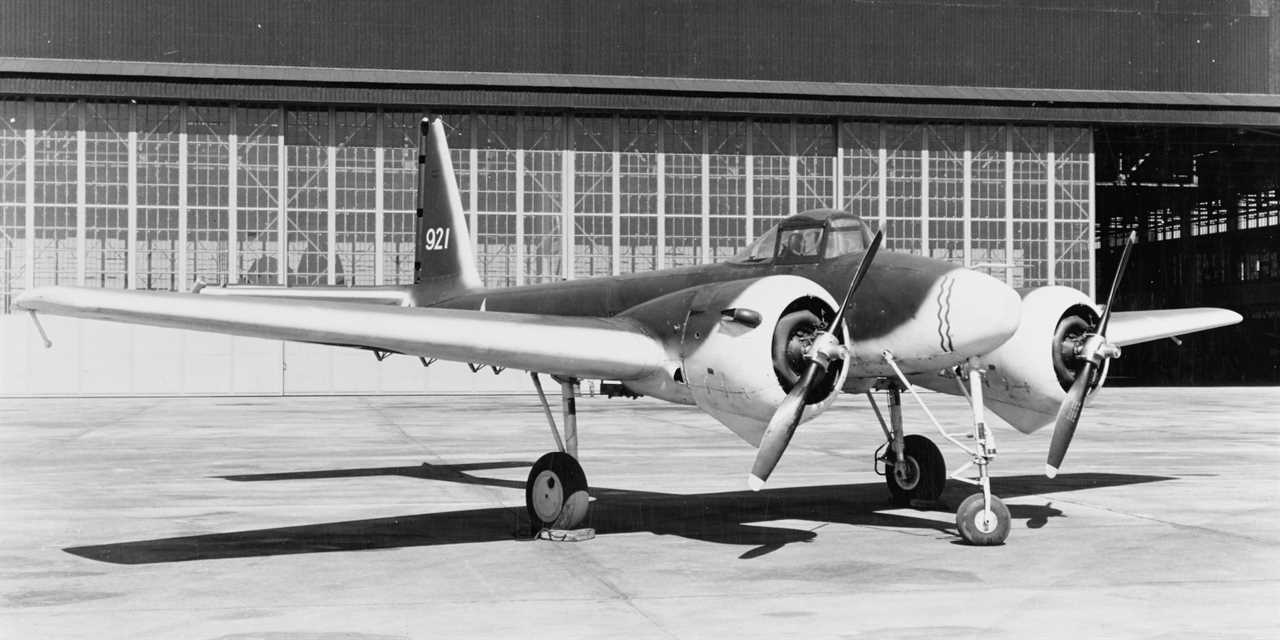
US Navy
- Loitering munitions have become a staple on modern battlefields, especially in Ukraine.
- These unmanned aircraft can linger over an area before crashing into a target and detonating.
- The technology is not new, and a US Navy experiment during World War II hinted at its utility.
One of the most notable features of the war in Ukraine has been the widespread use of loitering munitions.
Sometimes referred to as kamikaze drones, these aerial munitions differ from other unmanned aerial vehicles because they purposely crash into their targets and are distinct from cruise missiles because of their maneuverability and ability to loiter over a target area before striking.
Loitering munitions and armed UAVs in general are often regarded as a 21st-century development, but they have a long history. During World War II, the US Navy was behind some of the first such drone strikes during an experiment that was ultimately scrapped but hinted at what was to come.
TDR-1 assault drone
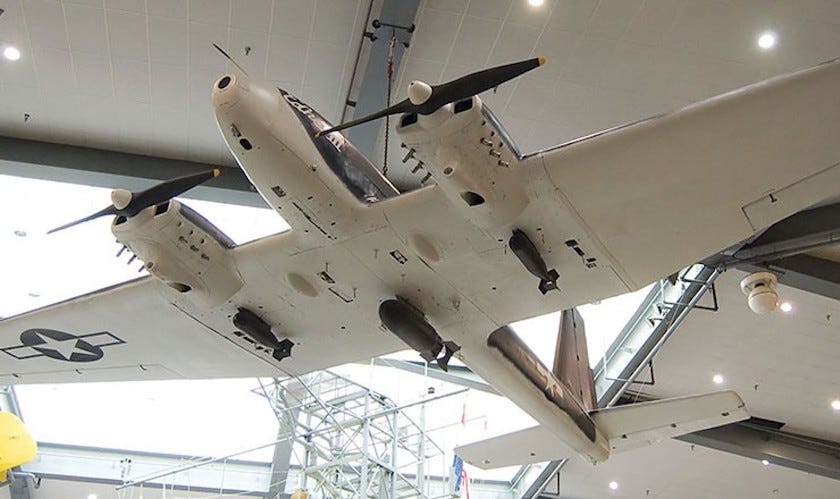
Naval History and Heritage Command
The US Navy began working on unmanned aerial systems in 1936. The initial goal was to create targets for naval anti-air gunnery practice, but the invention of radar altimeters and television along with the development of gyro stabilization and radio technology made designing unmanned aerial vehicles for distinct missions more realistic.
The use of radio-controlled target ships in the 1920s had shown it was possible to operate vessels remotely. When the US officially entered World War II, the government became much more willing to invest in novel ideas that could yield a military advantage. But acquiring proven conventional weapons remained the priority, so the Navy's new drones, developed as part of Project Option, needed to be cheap and made mostly of materials that weren't needed for the war effort.
The TDR-1 assault drone fit that bill. Developed by Interstate Aircraft, the TDR-1 was informed by work on the TDN-1, a carrier-based drone produced by another company that was ultimately canceled. The TDR-1 was made with pressed wood provided by the Wurlitzer Musical Instrument Company, which made pianos. The wood was placed around a steel-tube frame built by the Schwinn Bicycle Company.
The TDR-1 was 37 feet long and had a 48-foot wingspan. Two non-military Lycoming flat-head 6 engines provided 230 horsepower, giving it a top speed of 140 mph. It had a range of 426 miles and a ceiling of 6,000 feet. As it was intended for use against ships, the TDR-1 was designed with three hardpoints that could carry up to 2,000 pounds of ordnance.
Like the TDN-1, the TDR-1 had a cockpit and flight controls, allowing a human to fly it, but it also had a nose-mounted camera to relay live footage to a 5-inch television in a modified TBM-1C Avenger torpedo bomber, which would take control of the TDR-1 after it was launched by a ground crew.
Pacific operations
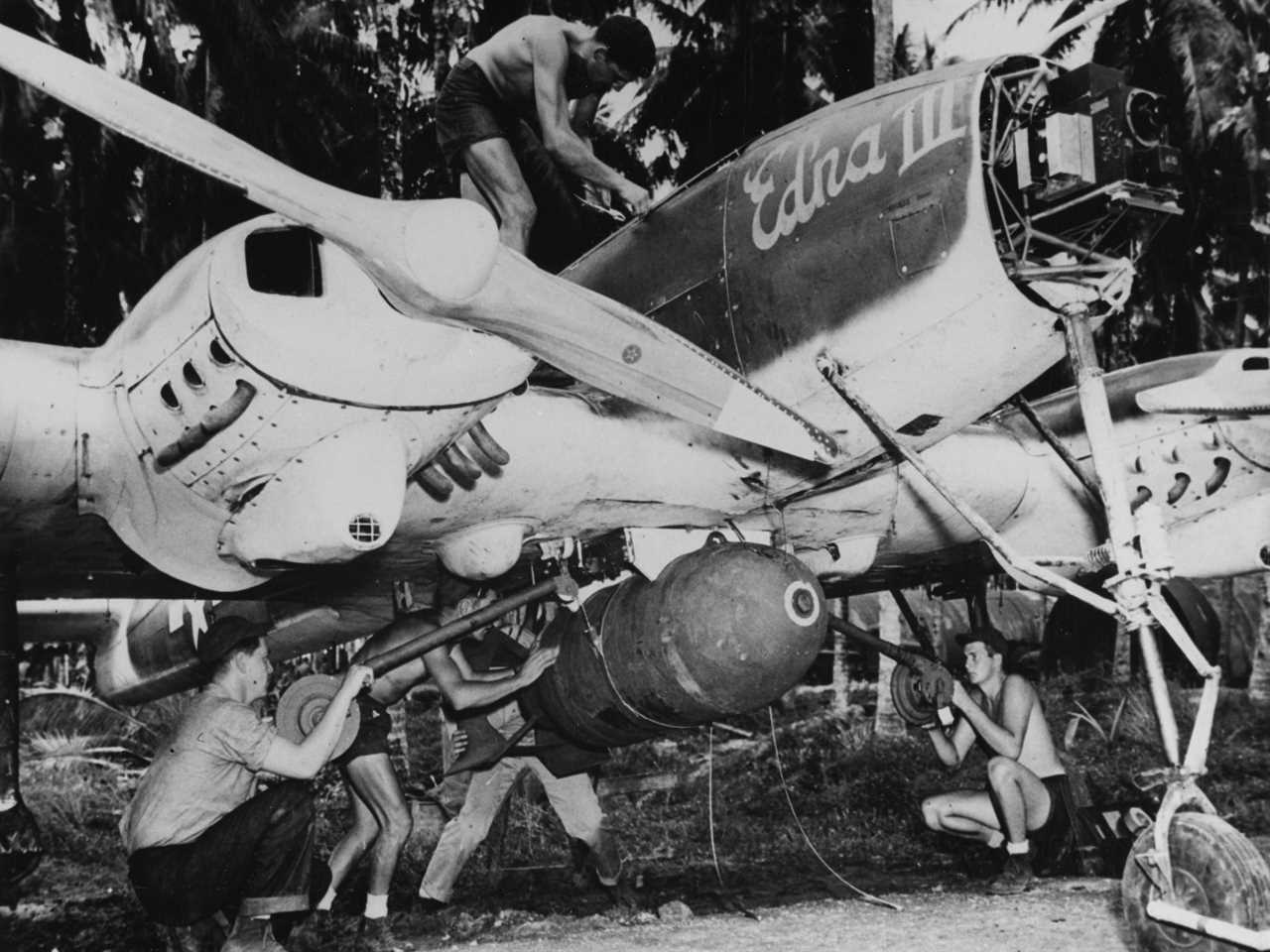
US Navy
The Navy in 1942 awarded Interstate a contract for 200 TDR-1s, about 190 of which were actually built. The drones could either drop their ordnance and return to base or fly into their targets while carrying heavy munitions. (The TDR-1 could jettison its landing gear, extending its range on one-way missions.)
The drones first flew in 1942 and were operational by 1944. They were assigned to Special Task Air Group 1, which conducted a series of tests over the US mainland.
STAG-1 was deployed with 50 TDR-1s to the Solomon Islands in June 1944 for combat testing and initial deployment, though the South Pacific's tropical conditions interfered with the electronics on the drones and made them more difficult to operate.
On July 30, the drone conducted its first operational test. Four TDR-1s, each carrying a 2,000-pound bomb, took off from Banika Airfield and flew to Cape Esperance on Guadalcanal to attack the Yamazuki Maru, a beached Japanese cargo vessel.
With control aircraft flying about 7 miles away, each drone was to fly directly into the Yamazuki Maru and detonate.
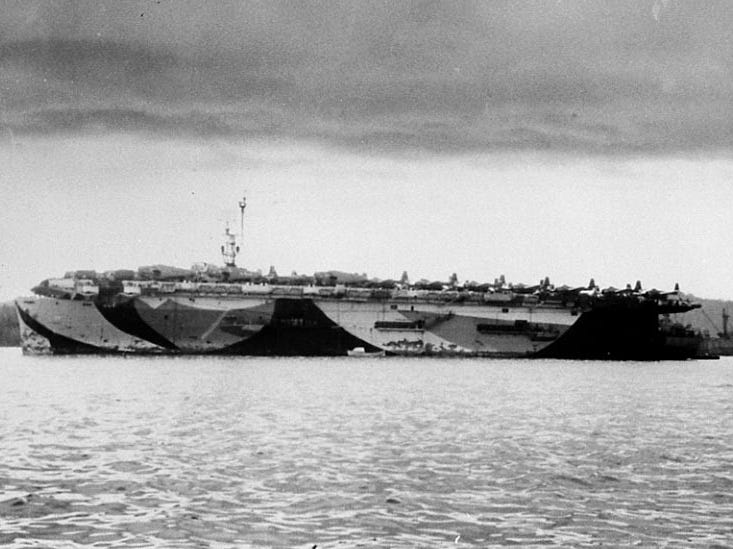
US Navy
The first drone collided with the middle of the ship, causing a massive explosion. The second drone missed the superstructure by a few feet, crashing onto the island behind the ship. The third drone crashed just short of the ship's bow without its bomb detonating, while the fourth struck near the rear of the ship, causing another huge explosion.
With two near-misses and two hits, the Navy approved further operations against Japanese targets in the area. On September 27, four TDR-1s conducted the drone's first official combat mission, targeting a Japanese vessel that had been beached on the island of Bougainville in the Solomons and converted into an anti-aircraft battery.
One TDR-1 was lost while in flight about 55 miles from the target, and another crashed just 30 yards from it. A third made contact but did not detonate. The fourth struck home, causing a massive explosion.
STAG-1 launched a total of 46 TDR-1s over the next month against anti-aircraft emplacements, airfields, ships (most of them beached), bridges, and other targets. Fifteen TDR-1s were lost en route to their targets, which were as far as 160 miles away. Thirty-one hits were recorded, according to US Naval Heritage and History Command, though it's not clear how many of those destroyed their targets.
Loitering munitions
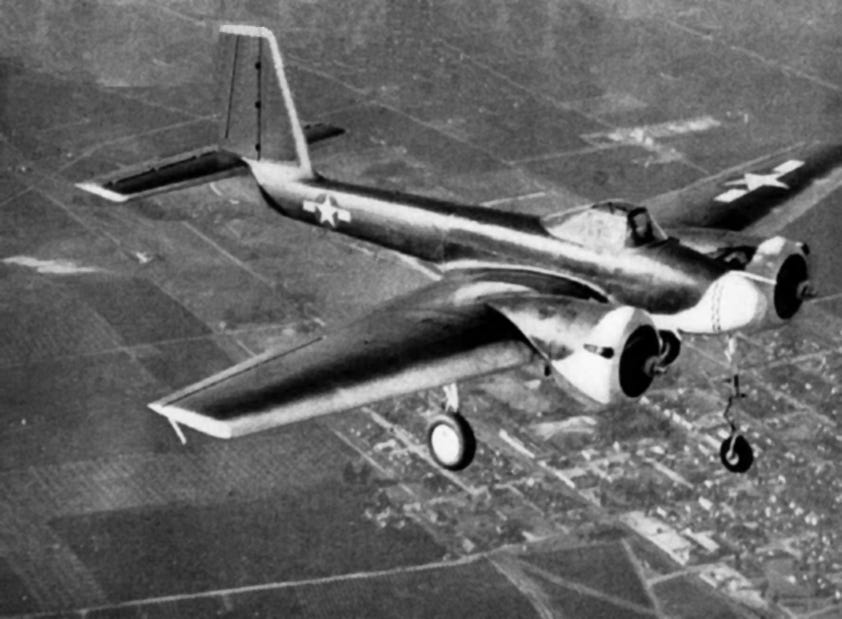
US Navy
Despite some early successes, the TDR-1 was ultimately cancelled. By the time it was authorized for strike missions, the heavy fighting had moved north of its area of operations and its strikes had little effect on the war.
Moreover, the technology of the time limited what targets the TDR-1 could actually strike. The low resolution of its nose-mounted camera and of the television on the command plane, for example, made it difficult to hit moving targets like ships — especially at night.
Navy leaders, who had always been skeptical of the drones, were unimpressed by the strikes and wanted to pursue more established systems. Consequently, the TDR-1 was taken out of service by November 1944.
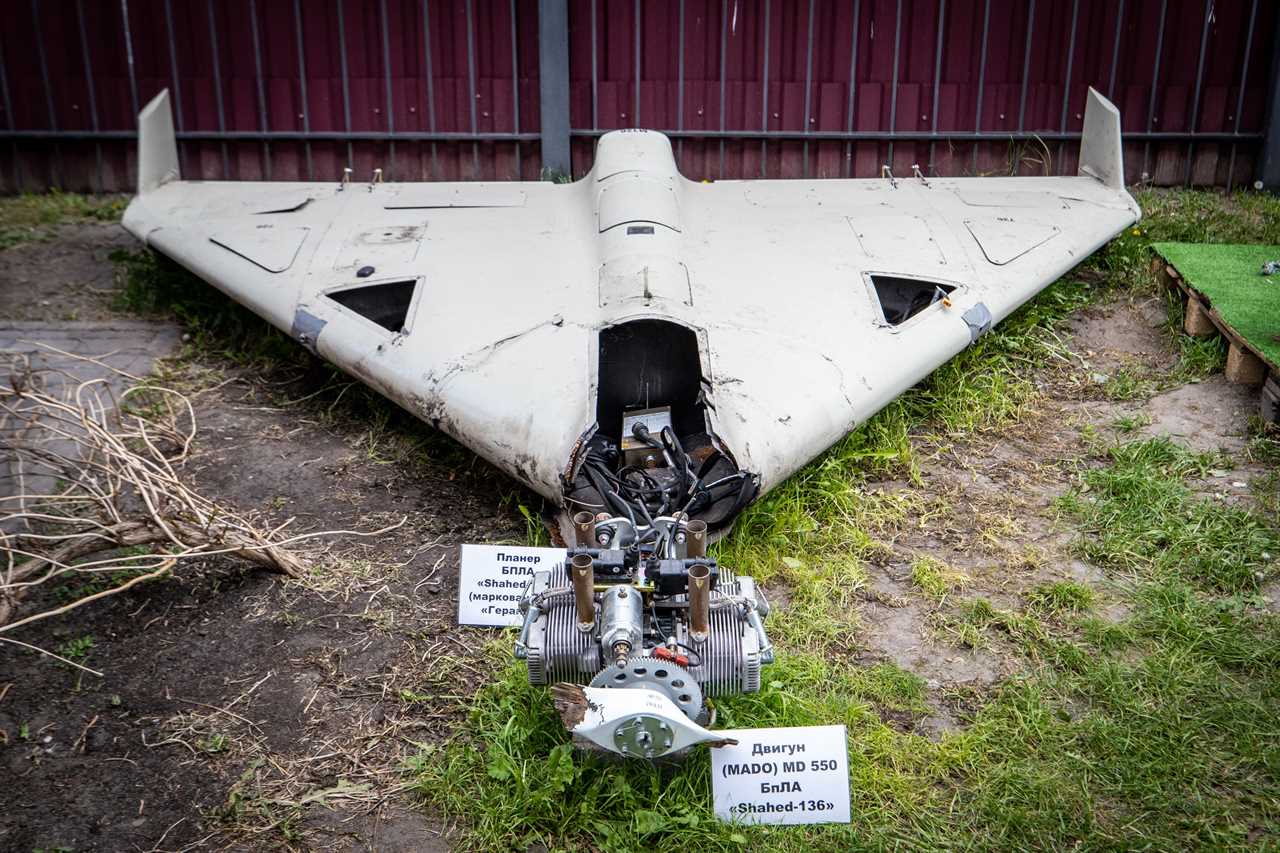
Oleksii Samsonov /Global Images Ukraine via Getty Images
Eighty years later, militaries around the world have embraced cheap, expendable munitions that can be guided to and loiter over targets as a must-have for modern warfare.
Loitering munitions and other drones were used to great effect during the six-week war between Armenia and Azerbaijan in 2020 and have been a staple of the war between Russia and Ukraine.
Ukrainian forces have used US-made Switchblade and Phoenix Ghost loitering munitions to strike battlefield targets and used other drones, including Soviet-era ones, to hit infrastructure inside Russia. Russian forces have used domestically made Lancet loitering munitions against Ukraine's military and employed Iranian-made Shahed-136 and 131 loitering munitions in attacks on military and civilian targets.
Read More
By: [email protected] (Benjamin Brimelow)
Title: A failed US Navy experiment during World War II hinted at how exploding drones would change the battlefield 80 years later
Sourced From: www.businessinsider.com/navy-experiment-with-tdr1-drone-was-preview-of-loitering-munitions-2023-6
Published Date: Sun, 18 Jun 2023 13:43:00 +0000
Did you miss our previous article...
https://trendinginbusiness.business/business/exploring-alternative-strategies-for-youtube-growth-beyond-free-views
.png)





